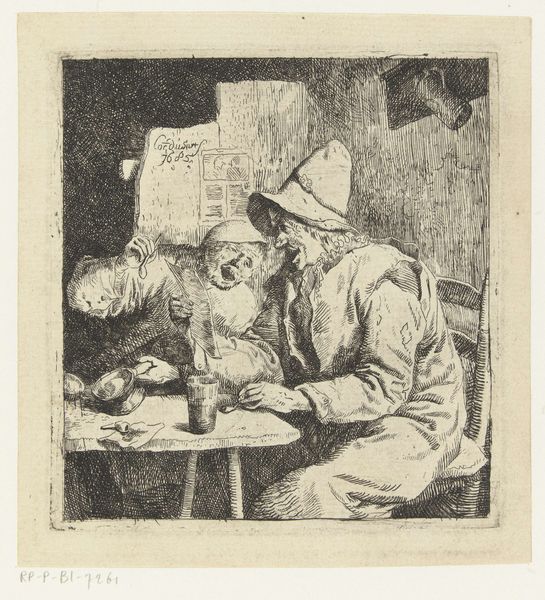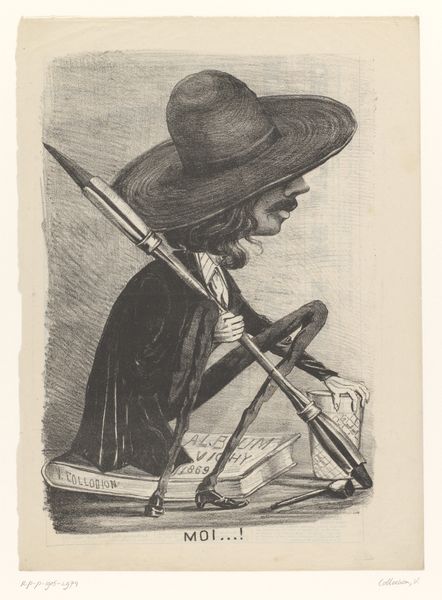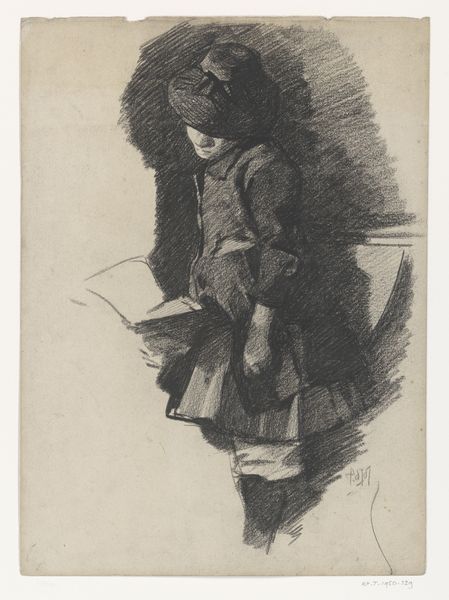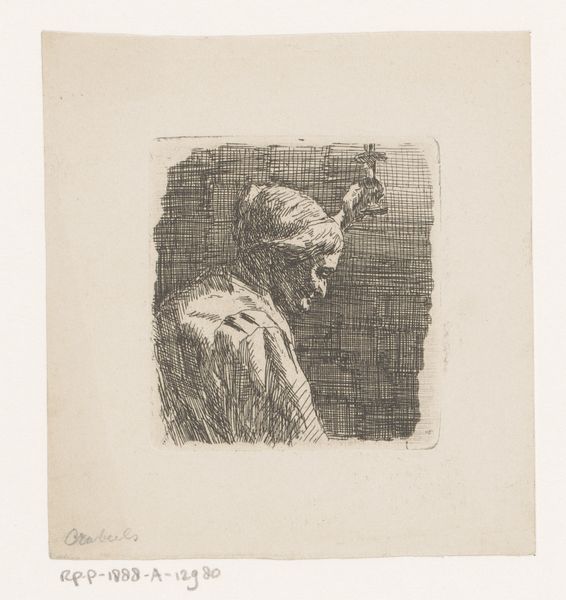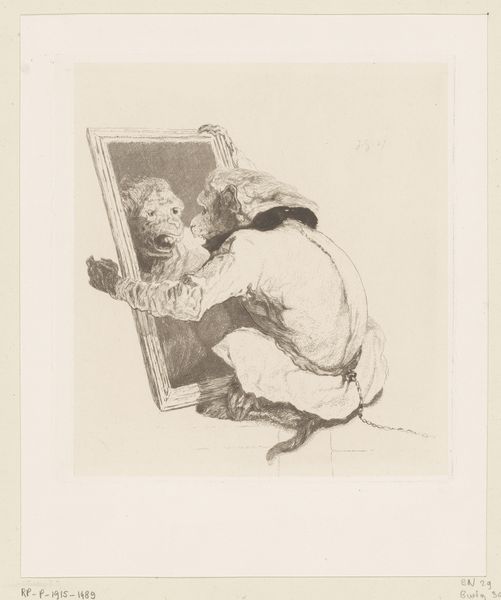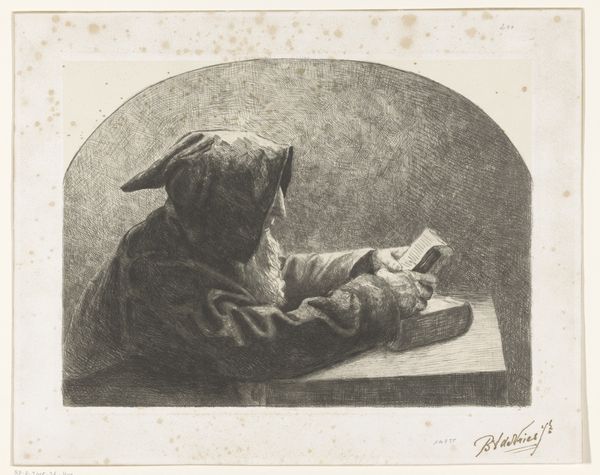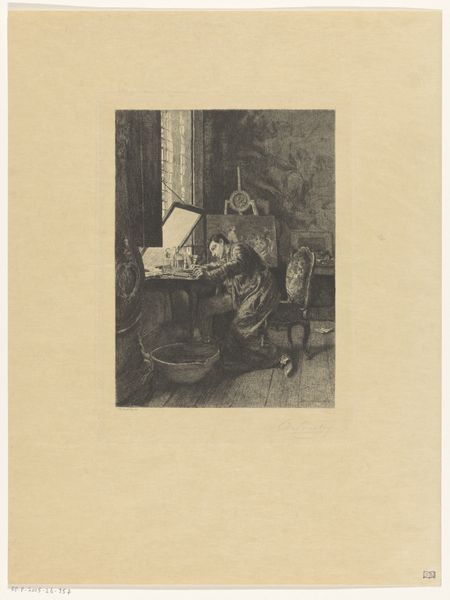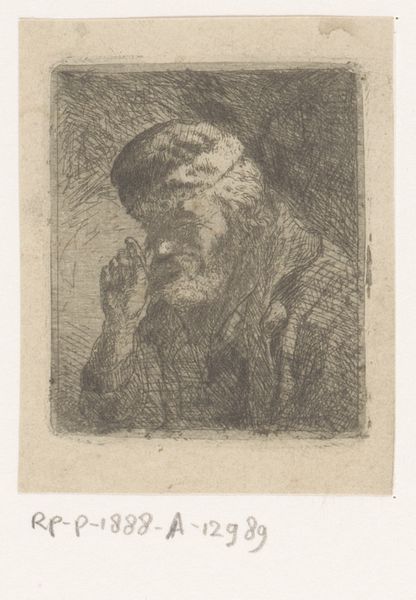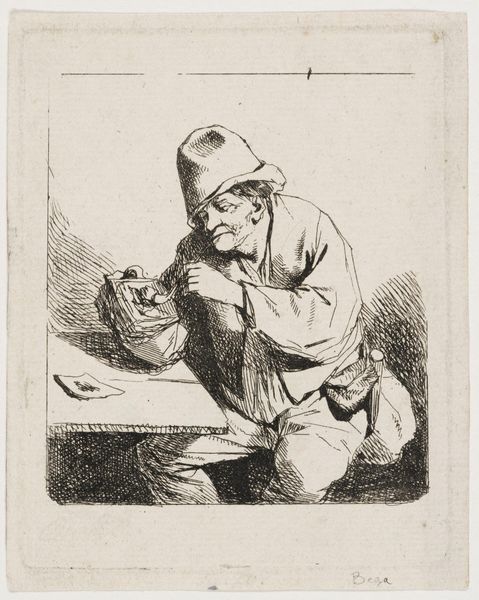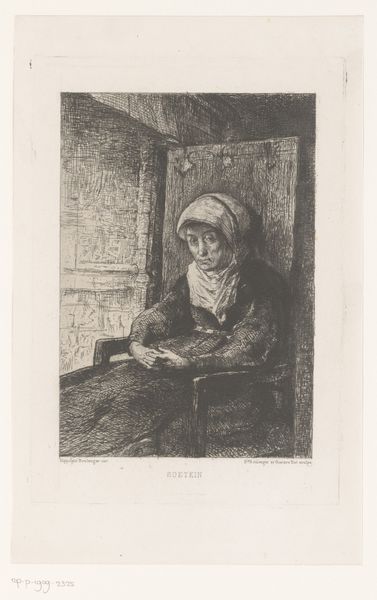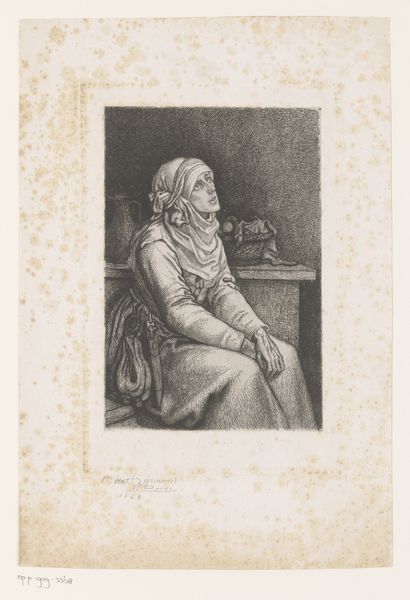
drawing, print, etching
#
drawing
#
medieval
# print
#
etching
#
landscape
#
romanticism
#
realism
#
monochrome
Dimensions: height 120 mm, width 112 mm
Copyright: Rijks Museum: Open Domain
Curator: This etching from 1847, titled "Lezende Monnik," or "Reading Monk," is by Charles Jacque. It has such an intensely cloistered atmosphere. What strikes you first? Editor: The darkness, definitely. That hooded figure almost melts into the shadows, so bent over the pages it makes one wonder what is at stake. Is this sacred knowledge, a conspiracy, a lament? There is something almost gothic about this depiction. Curator: The visual language employed really emphasizes a sense of introspective solitude, wouldn't you agree? The monk becomes almost swallowed by the hood of his garment and immersed by the act of reading, evoking the tradition of monastic scholarship. We can see he’s lost to us. Editor: I can see how that references those older traditions, especially as literacy meant power for those within religious orders. Yet in 1847, the depiction feels inherently melancholic too. Consider the changing roles of religion against the rise of the industrial era and the revolutionary stirrings across Europe—the symbolism hints at institutional waning, not potency. Curator: Ah, a good point! So you view it as symbolic of the waning influence, or even an elegy for the monastic traditions as they existed then? That contextual frame gives new meaning to the rather bleak use of the monochrome palette. Editor: Precisely! The hatching method contributes a texture conveying so much weightiness, perhaps signaling the increasing precarity of monastic power, and institutional faith altogether. It gives an intimate insight into their struggle. The image acts as a memorial, which makes it much more potent, I find. Curator: Looking at the symbolism from that angle changes things indeed; perhaps it’s not just the light being absorbed but societal influence itself! Thank you, it has changed my reading considerably. Editor: It also demonstrates how the echoes of power persist within intimate portraits, and invites new contemplation. The past always informs the present.
Comments
No comments
Be the first to comment and join the conversation on the ultimate creative platform.

